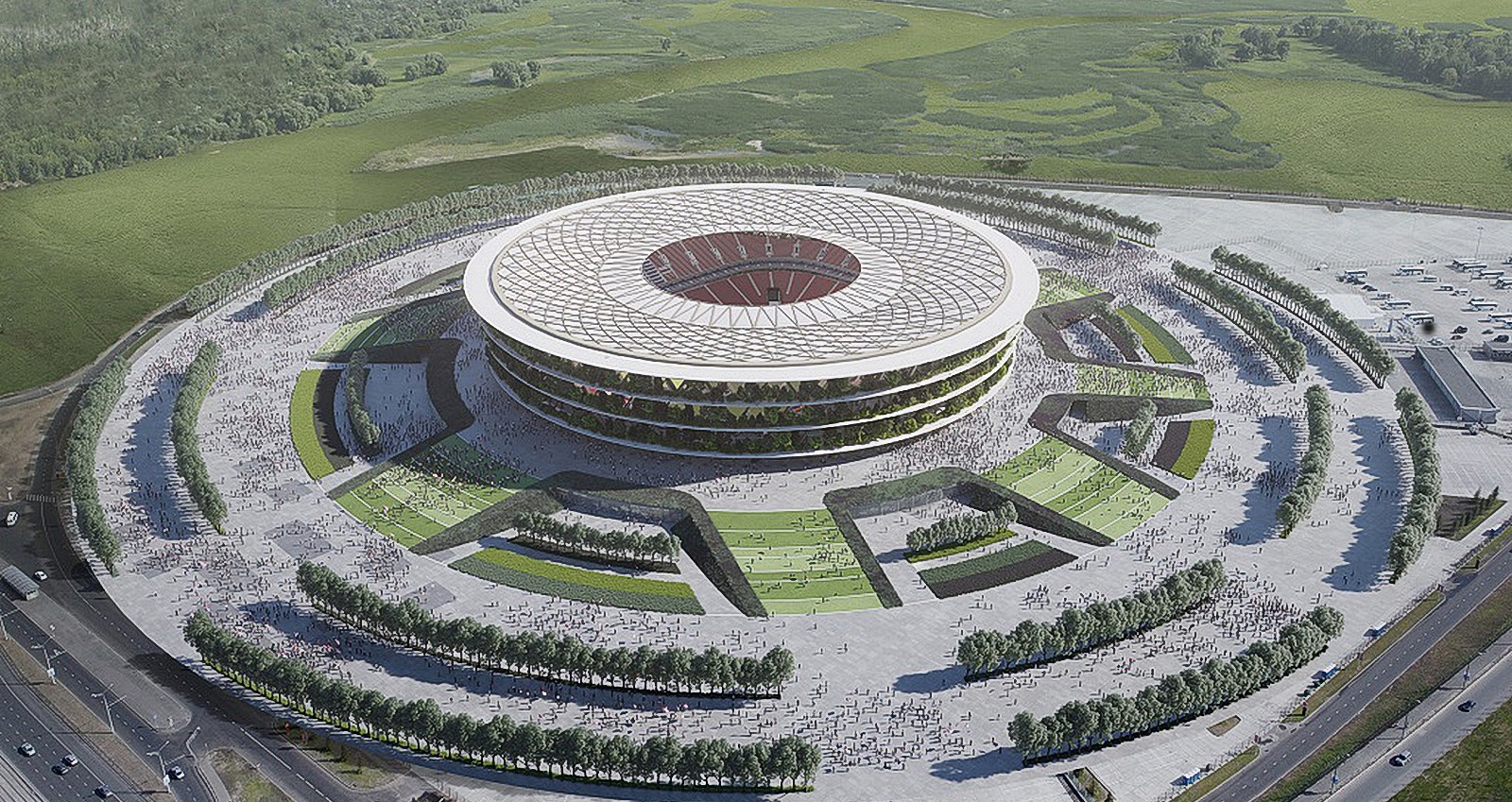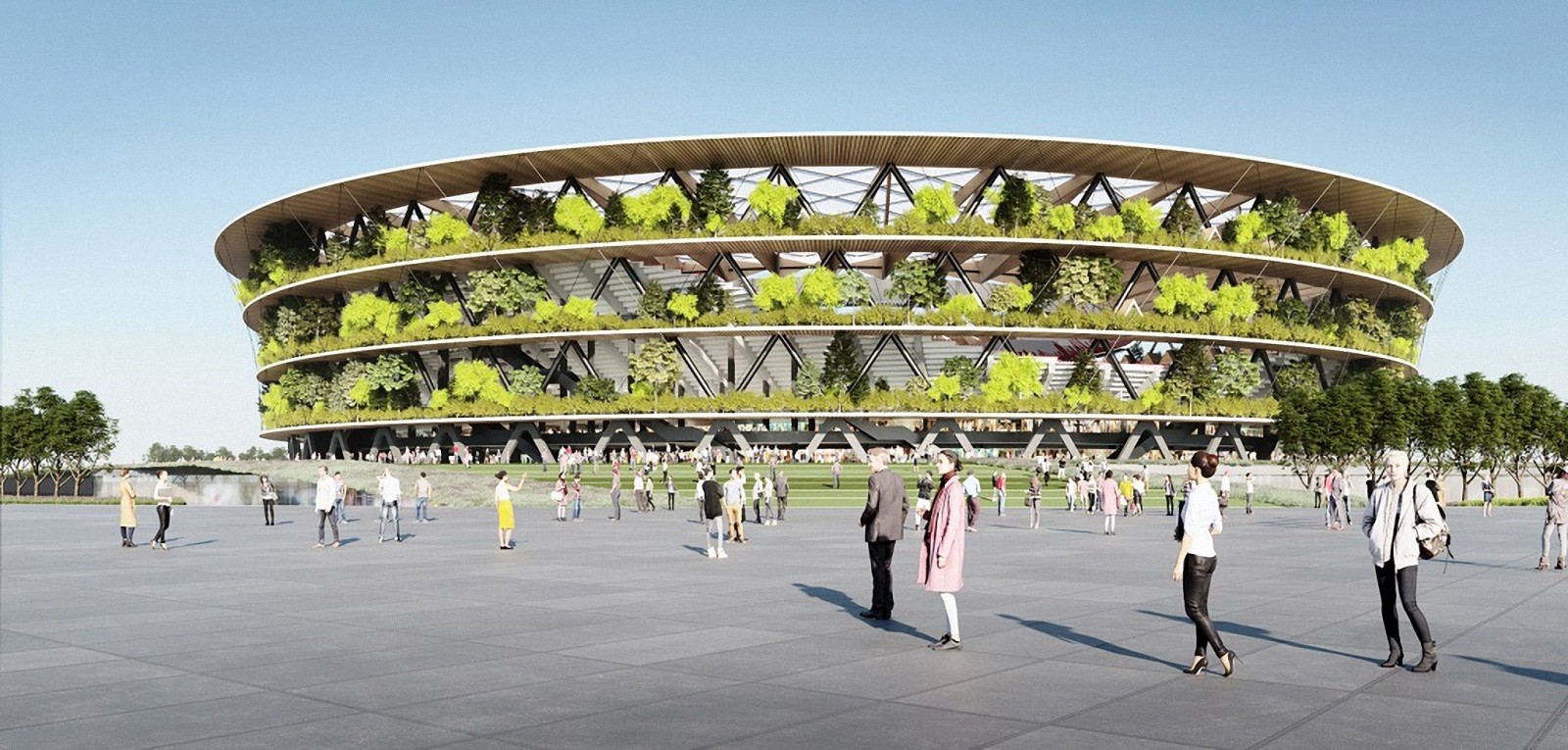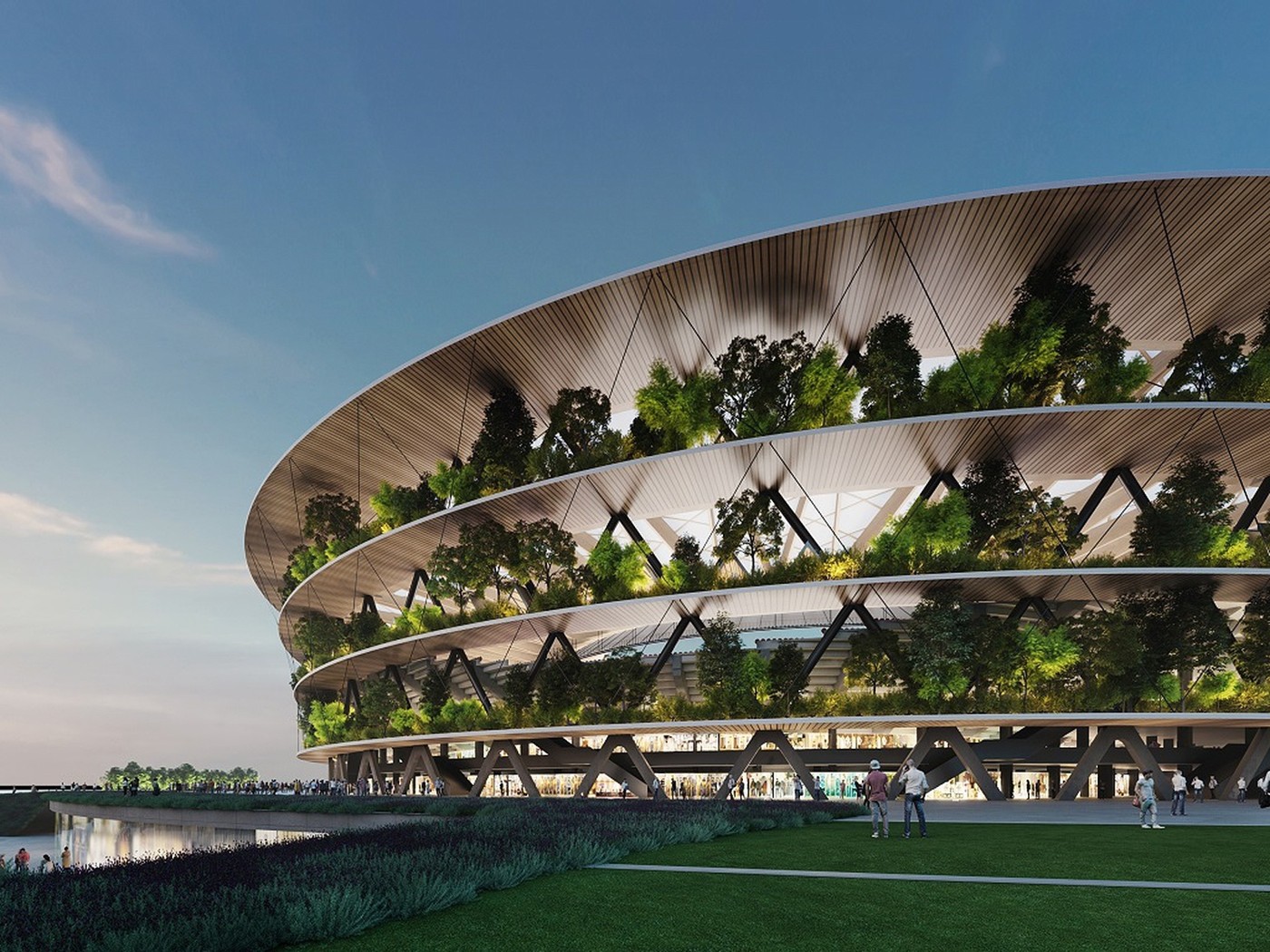New design: “Serbian Wembley”, Vučić's grand vision
source: StadiumDB.com [MK]; author: michał
 When a president announces during the pandemic that a national stadium is urgently needed, it's bound to cause a stir. But despite opposition the €250-million giant outside Belgrade will be built. Or... it won't.
When a president announces during the pandemic that a national stadium is urgently needed, it's bound to cause a stir. But despite opposition the €250-million giant outside Belgrade will be built. Or... it won't.
Advertisement
This project has been on the horizon even longer than the current president's reign. A new national stadium for Serbia was the subject of numerous campaign promises, we've seen a few concepts already and all of them ended up dead. But since Aleksandar Vučić rose to power, things went a few steps further than previously.
In 2019 geological and geotechnical analyses began on the selected site, followed by a tender for the technical design documentation. However, in spring of 2020 authorities revealed the tender was cancelled because of a shift in priorities, caused by the COVID-19 pandemic. Public spending isn't limitless, after all.
It may have thus been a surprise to some when renderings of the stadium were revealed by the ministry of finance in late August of 2020. Vučić himself went boldly ahead and said he will build the stadium and it won't be cheap. But it's something Serbia urgently needs, he said.
Along the vision spearheaded president Vučić, the new national stadium of Serbia should be built outside Belgrade city limits, within the town of Surčin. The remote location was chosen as the site of a new highway hub, a place towards which Belgrade is expected to spill over in the long term and where crucial national roads connect.

Such decision symbolically reconciles fans of Serbia's two largest football clubs, Crvena Zvezda and Partizan. Had any of their stadiums been selected as the preferred site, it would have certainly caused tensions.
Then again, decision to build far from existing settlements has also sparked controversy. The plan is ambitious and suggests spending €250 million in taxpayer money ($307m today), yet no feasibility study, economic viability study or environmental impact analysis have yet been presented.
This caused vocal protests in early days after the renderings were revealed from defenders of transparency and rational public spending. 14,000 people signed a petition against the stadium within a few days but then it lost all momentum. The stadium scheme hasn't, it's still on Aleksandar Vučić's agenda, as he confirmed in early 2021.
The plan sees a classic double-tiered auditorium with a strip of skyboxes between. Total capacity is projected to reach 55,000, slightly more than at Marakana but without the running track. Less conventional, the stands are to be surrounded by a spacious diagonal steel frame supporting the roof and facades.
Rather than opting for an opaque cladding, designers decided to create three terraces with plenty of shrubs and trees. This alone, and especially combined with significant use of timber, rightly brings to mind the Tokyo Olympic Stadium.
The stadium's circular footprint facilitates the creation of a tensile roof, which is a reasonable and efficient move. However, in Surčin a novel feature is expected. The compression ring outside and tension ring inside are to be connected by wooden beams.
Because of the stadium's location, at least in its early years cars are expected to be the main means of transport. That's why parking capacity in excess of 10,000 is planned.
Author: Michał Karaś
Advertisement

 StadiumDB
StadiumDB ©
©  ©
©  ©
©  ©
©